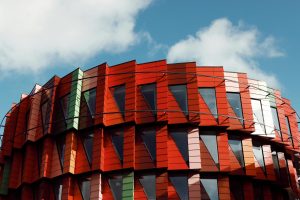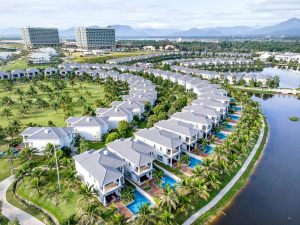Senior Living Communities: Evolving to Meet Changing Needs
As the baby boomer generation ages, the demand for senior living communities is on the rise. These communities have undergone significant changes over the years, from the traditional nursing homes to modern, vibrant communities that cater to the changing needs of older adults. With the increase in life expectancy and the desire for a better quality of life in their golden years, seniors are seeking out different options for their retirement. In response, senior living communities have evolved to provide a variety of housing, services, and amenities to meet the changing needs of this growing population. Let’s take a closer look at how senior living communities are adapting to the changing landscape of retirement living.
The Evolution of Senior Living Communities
Senior living communities, also known as retirement communities or senior housing, have come a long way since their inception in the early 20th century. The first senior living communities in the United States were primarily focused on providing basic medical and nursing care to seniors who could no longer live independently. These were known as nursing homes or skilled nursing facilities and were often seen as the last resort for seniors.
However, in the 1970s, a shift began towards creating independent living communities for active seniors who did not require any medical care. These communities offered a social and active lifestyle with amenities such as fitness centers, swimming pools, and organized social activities. This model became popular, and over the years, retirement communities started to offer a continuum of care, providing different levels of care to seniors as their needs changed over time.
Catering to the Changing Needs of Seniors
Today’s senior living communities are far from the traditional nursing homes of the past. They offer a wide range of housing options, including independent living, assisted living, and memory care, to meet the diverse needs of older adults. These communities provide a continuum of care, allowing seniors to age in place and receive the level of care they require without having to move out of the community.
One of the significant changes in senior living communities is the emphasis on maintaining an active and social lifestyle. Baby boomers are looking for communities that offer a variety of activities and amenities, such as fitness classes, cultural events, and educational programs. Senior living communities are no longer just places for seniors to live; they are vibrant communities that promote healthy, social, and active living.
Amenities and Services in Senior Living Communities
In addition to catering to the changing needs and desires of older adults, senior living communities also provide a wide range of amenities and services to enhance the quality of life for their residents. These can include on-site restaurants, movie theaters, libraries, beauty salons, and more. Some communities even offer concierge services to assist residents with various tasks, making it easier for them to enjoy their retirement without the stress of everyday chores.
Moreover, senior living communities have also started to focus on wellness and preventive care. Many offer fitness programs, nutritional counseling, and health screenings to promote overall well-being and prevent age-related health issues. By taking a proactive approach to health and wellness, these communities are helping seniors maintain their independence and live a fulfilling life.
The Future of Senior Living Communities
The senior living industry is rapidly evolving to meet the changing needs of older adults, and the future looks bright. As the population ages, there will be increased demand for innovative and personalized senior living options. This will require communities to continue to evolve and adapt to provide the best possible living experience for seniors.
One trend that is already making its way into senior living communities is the use of technology. From virtual reality tours to assistive devices, technology is helping to improve the overall experience for seniors living in these communities. It is also making it easier for family members to stay connected and monitor the well-being of their loved ones, even from a distance.
There is also a growing demand for specialized senior living communities, such as LGBT-friendly communities, faith-based communities, and communities catering to specific cultures and languages. As the senior population becomes more diverse, these types of communities will continue to grow and provide a welcoming and inclusive environment for seniors.
In Conclusion
The landscape of senior living communities is constantly evolving to meet the changing needs of older adults. These communities have come a long way from the traditional nursing homes and are now vibrant and active communities that promote a high quality of life for their residents. With a focus on wellness, social engagement, and personalized care, senior living communities offer an ideal retirement option for active seniors looking to age gracefully and enjoy their golden years to the fullest.
As the demand for senior living communities continues to grow, we can expect to see even more innovative and personalized options in the future. From revolutionary technology to specialized communities, the future of senior living is bright, and it’s all about meeting the changing needs and desires of older adults.









